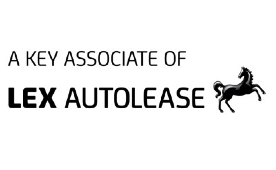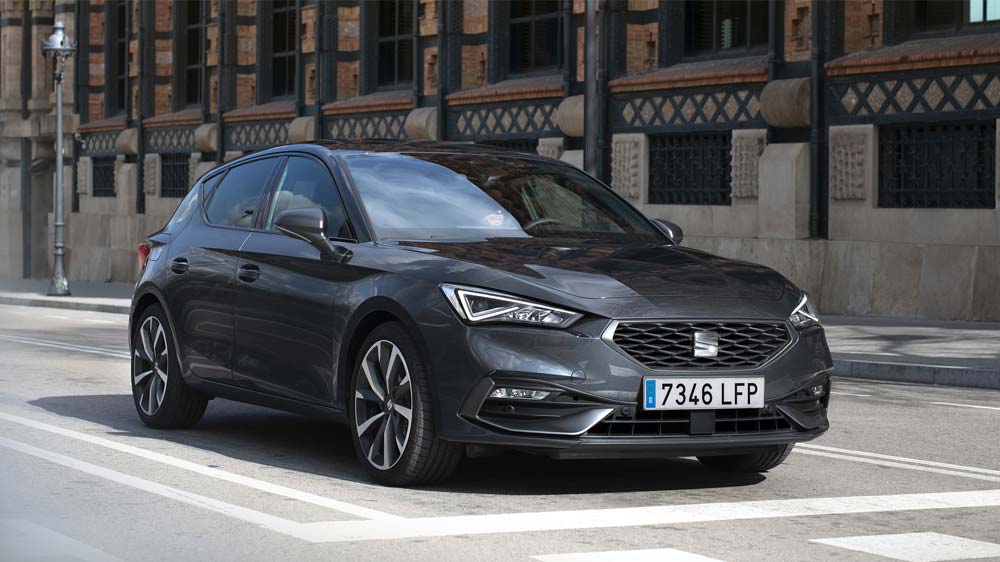
Seat Leon Hatchback Review

Introduction
Watch enough Star Wars movies and you’ll soon realise one thing - apprentices have a nasty habit of eventually becoming masters. And so it is with the SEAT Leon, a car that’s long lived in the shadow of its more popular sibling, the Volkswagen Golf, but is now a different proposition entirely. In case you didn’t know, SEAT belongs to the wider Volkswagen Group, along with the likes of Audi, SKODA and Porsche.
And as such the Leon shares the same basic platform as the VW Golf and also enjoys lots of those tried and trusted VW parts found in the Golf. But here’s the thing - while beauty is in the eye of the beholder, for our money the new Leon outshines the new Golf when it comes to exterior styling. The Leon is a slightly longer car than the Golf, too, resulting in better space in the rear for passengers while having exactly the same sized boot. Yet the Leon costs from around £159 per month to lease, the Golf slightly more expensive at around £180 per month. So has the unthinkable finally happened - has the Leon actually become a safer bet than the Golf…? Read on to find out.
Review Sections
Select's rating score* - 3.6 / 5
At a Glance
If the traditional Golf is seen as a bit ‘pipe and slippers’ by some, the Leon is pitching to a more youthful crowd. There’s an energetic feel to the body, particularly that muscular bonnet and tapering roofline, where the latest Golf’s style revisions have been met with a certain amount of shrugging.
There’s also a good range of engines to go at, from the frugal to the slightly more sporting. And an important fact is that new to 2020 is a plug-in hybrid Leon - the eHybrid PHEV, which will do battle with VW’s equivalent, the Golf GTE. The electrified Leon weds a 1.4 litre petrol engine to a 75 kW electric motor to produce around 204 PS, and it’s also capable of travelling around 40 miles on electric-only mode. Producing CO2 emissions of 27g/km, it’s a car that’s sure to appeal to company car drivers who want to avoid being hammered by benefit-in-kind (BIK) tax. If you’re not quite ready to take the plug-in plunge there are mild hybrid alternatives.
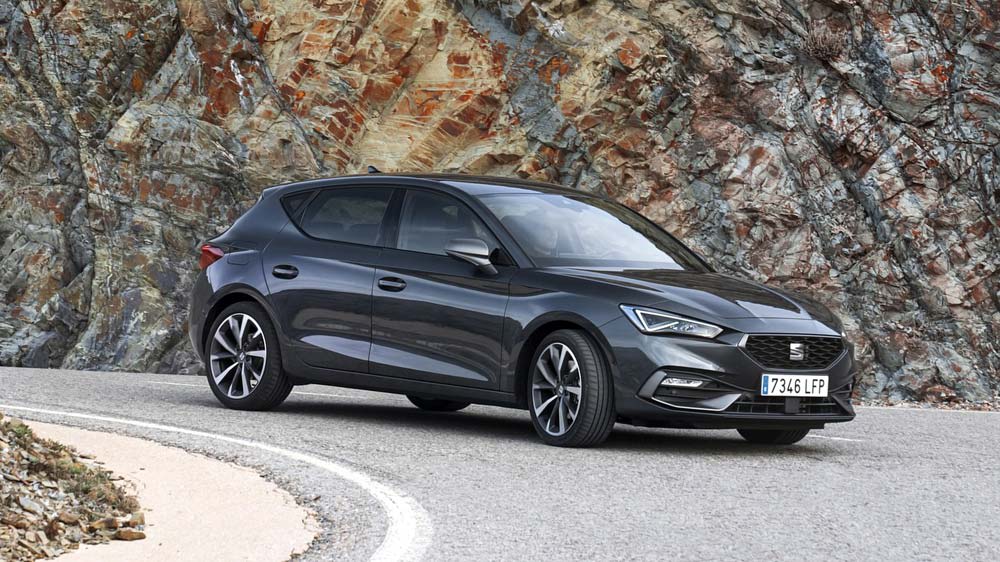
The 1.0 litre ‘eTSI’ is also new for 2020, featuring a 48V starter-generator and lithium-ion battery to enable the car to coast with the engine switched off, recuperate energy under deceleration and provide electrical torque assistance during acceleration. There’s also a more powerful 1.5 litre eTSI. But, for our money, the 1.5 litre, 130 PS TSI - without the mild hybrid tech - is probably the sweet spot for most owners. It’s actually more economical than the 1.5 eTSI, returning around 52 miles to the gallon, and also churns out less CO2 than the mild-hybrid. With the 0-62mph time of 9.4 seconds, it should prove pacey enough for most family owners.
Key Features
You’re spoilt for choice when it comes to which Leon you plump for, because there are seven different trim levels available. It begins with ‘SE’, and runs through SE Dynamic, FR (aka ‘Formula Racing’), FR First Edition, FR Sport, Xcellence and Xcellence Lux. Don’t expect better performance in the FR models, because power remains the same, but you do get sportier, firmer suspension for a more agile ride quality.
Meanwhile the Xcellence models are all about luxury and kit, with suede upholstery, a heated leather steering wheel and an uprated infotainment system. The good news is that even the base SE models come really well specced, coming with LED lights front and rear, full smartphone integration, an 8.25 inch media system with two USB ports, as well as cruise control and rear parking sensors.
Performance & Drive
There’s no out and out sports model with the SEAT Leon - if you’re after a rival to the VW Golf GTI you’ll have to look to CUPRA, SEAT’s performance division, and their CUPRA Leon. But if you’re looking for straight line speed, the eHybrid offers some decent grunt, with a 0-62mph time of just 7.5 seconds, compared with the Golf GTI’s time of 6.3 seconds. The 150 PS TSI is also fairly rapid, covering 0-62mph in 8.4 seconds and boasting a healthy 250 Nm of torque.
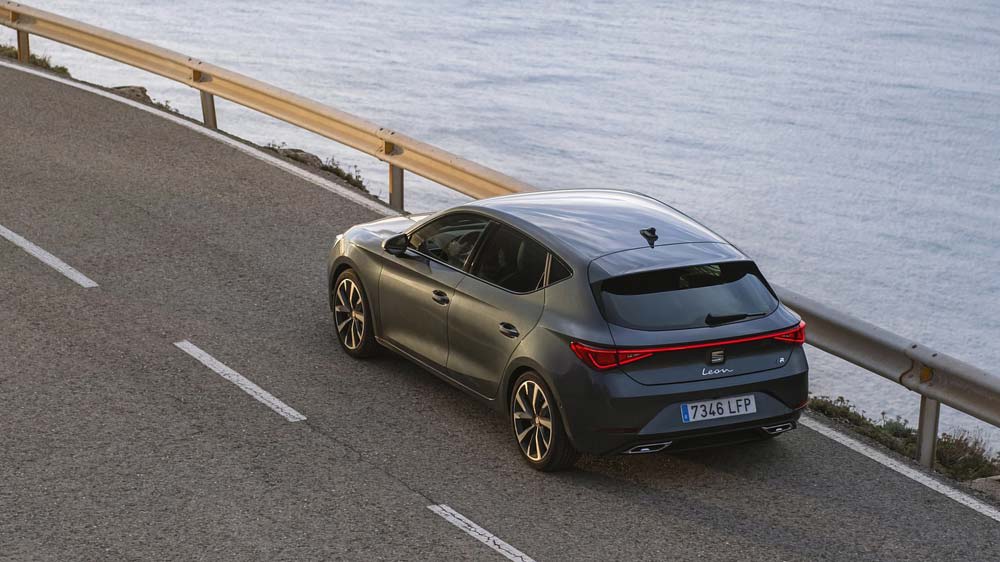
And if you want the sharpest handling, you’ll have to opt for either an FR model or one of the Xcellence trims, which also have sports suspension. Even with the firmest suspension set up, the Leon still proves pliable and comfortable while rattling over potholes. And the models with sports suspension also feature drive profile selection, which lets you alter how heavy the steering is, giving you plenty of feedback while navigating the twisties, or making it nice and light when running the gauntlet of the supermarket car park.
Running Costs
As you might imagine, it’s the eHybrid Leon that rules the roost when it comes to running costs. It’s a powertrain that only starts being available on FR models and above, so that could be a barrier to ownership for some, with lease deals for the eHybrid starting from around £330 per month. But the benefits are obvious.
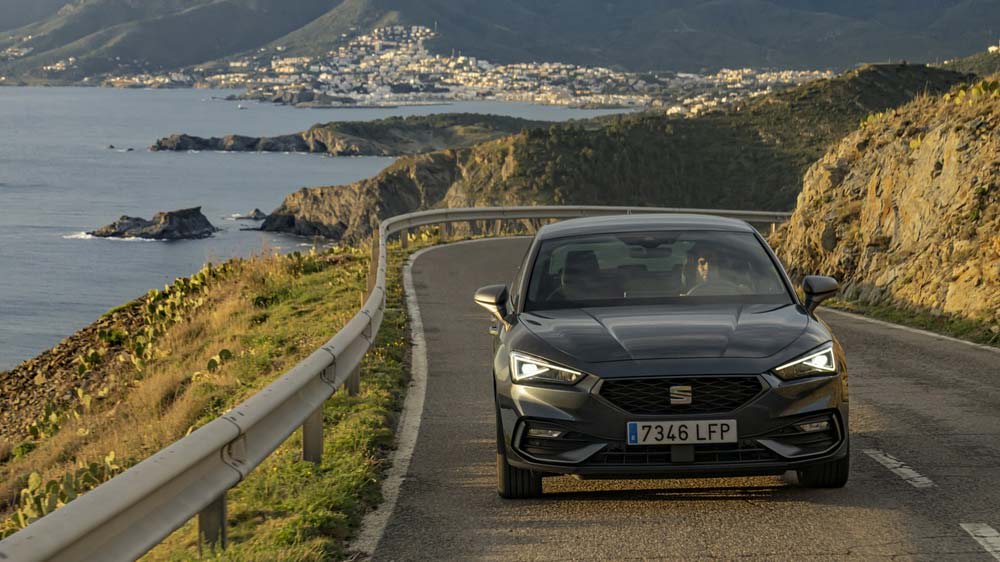
Fuel economy is a whopping 217 - 235 miles to the gallon and with CO2 emissions of 27 g/km there’s a Benefit In Kind tax rate of just 6%. The 1.0-litre eTSI DSG might also appeal - particularly if you’re a fleet manager - as it offers good value for money while also boasting impressive technology, and also benefits from a P11D value of just £22,500. Here fuel economy is a healthy 50 miles to the gallon, CO2 emissions are a wallet-friendly 127 g/km, and acceleration is probably quicker than you might at first imagine, with 0-62mph coming 10.8 seconds. You also got a DSG gearbox with the eTSI, which is a welcome bonus.
Interior
The interior of the SEAT Leon sits somewhere between the Ford Focus and the VW Golf in terms of how plush and tactile it is, and it’s certainly nowhere near as fancy as the latest BMW 1 Series.
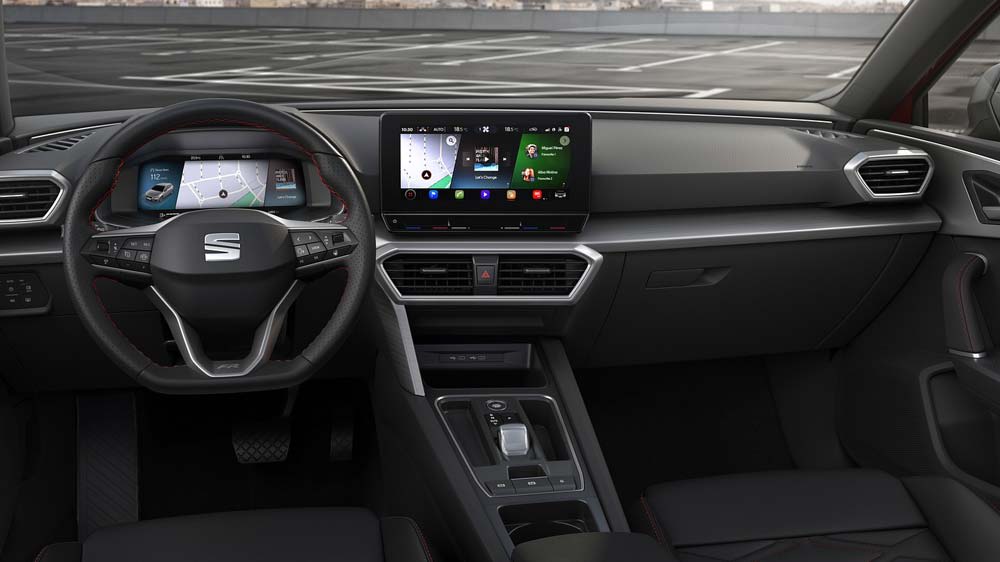
It’s likely to prove noisier in the cabin on long motorway journeys than the Golf, too. But the seating position is good, lumbar support in the chairs is more than accommodating, and you adopt a slightly lower, almost sportier, driving stance than the Golf. You won’t get SEAT’s ‘Microsuede’ upholstery until you head up to FR Sport trim, which also includes the larger 10 inch infotainment system with sat nav, wireless phone charging, and power-assisted seats. Meanwhile the range-topping Xcellence Lux has just about every goodie SEAT could throw at it, from three zone climate control to interior wraparound lighting.
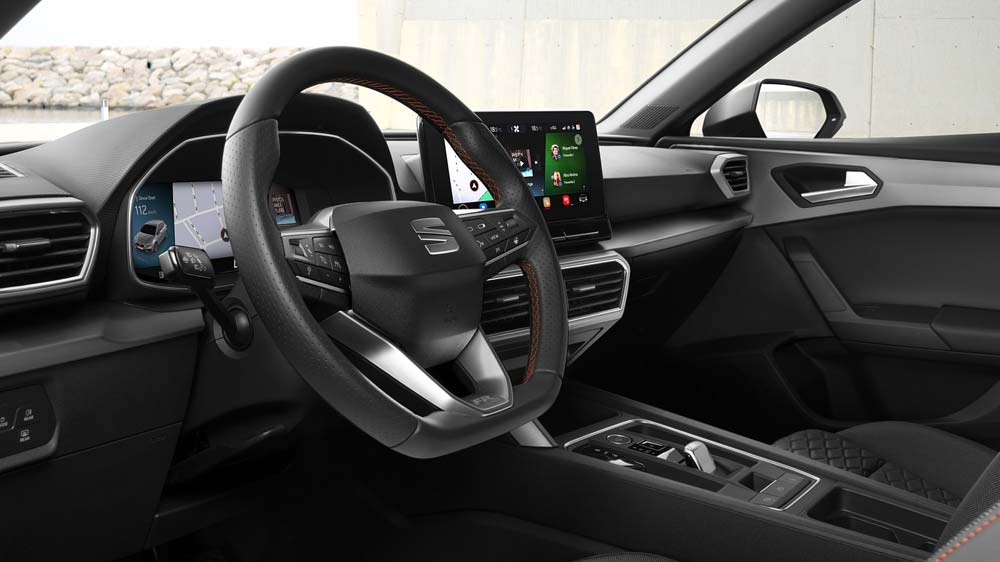
The only down side to things is that SEAT has done away with old-fashioned knobs and dials, instead relying on the touchscreen, which might prove fiddly and distracting for traditionalists.
Practicality & Boot Space
This where the Leon really comes into its own compared with the Golf. As mentioned previously, because the Leon is slightly longer than the Golf - 4,368 mm with the Leon compared with 4,284 mm with the Golf - it’s more accommodating in the rear. And in the war of the boot space , the Leon and the Golf are locked in battle with precisely 380 litres apiece, which is more than 375 litres you get with the Ford Focus and the 370 litres that comes with the Vauxhall Astra.
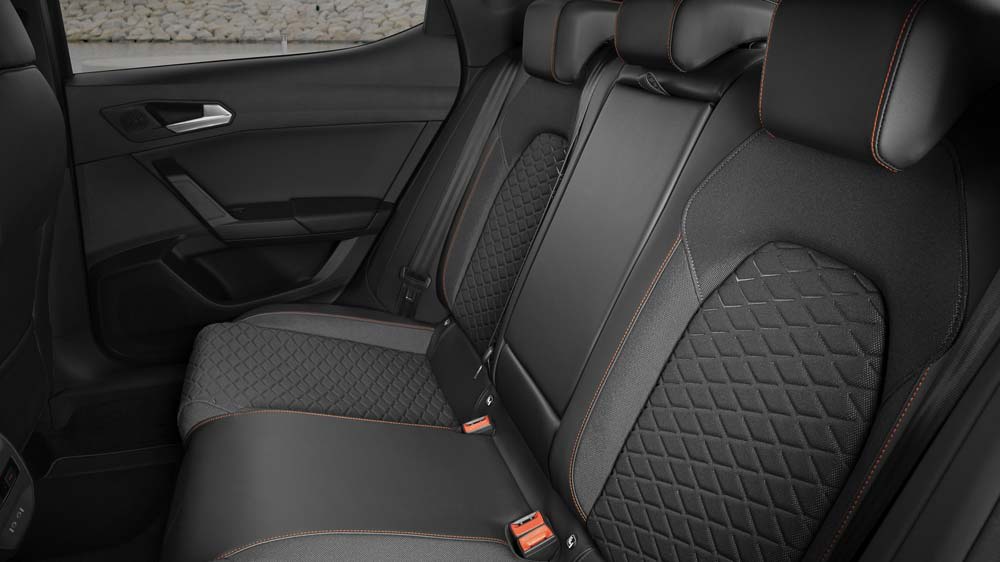
The rear bench seats come with a 60/40 split on all models, there’s back pockets in the front seats for added practicality, and there’s ISOFIX points in the outer rear seats as standard, too. All models also come with a handy 12V power supply in the centre console.
Safety
The current generation of SEAT Leon hasn’t been tested by Euro NCAP but the 2012 incarnation has, scoring the full five stars, and there’s nothing to say the 2020 model will be any different. The 2012 test saw the Leon scoring particularly highly for child occupant safety, which is a definite tick in the box for those who’ll be using the Leon as a family workhorse. And when it comes to driver safety features, the Leon is locked and loaded.
In base SE trim there’s a tiredness recognition system, a lane keeping system, as well the VW Group’s very well praised ‘forward collision warning braking reaction to vehicles, pedestrians and cyclists’. On top of that there’s seat belt reminders for both the front and rear seats.
Options
When it comes to gearbox options, you’re looking at a six speed manual for the traditional internal combustion engine cars, and a seven speed auto box for the mild hybrid or plug-in hybrid models. There’s a selection of eight different metallic and non-metallic paints - none of which requires you to part with any more money and all come as standard. Other than that, there’s not a whole lot else going on in the way of customisation or optional extras.
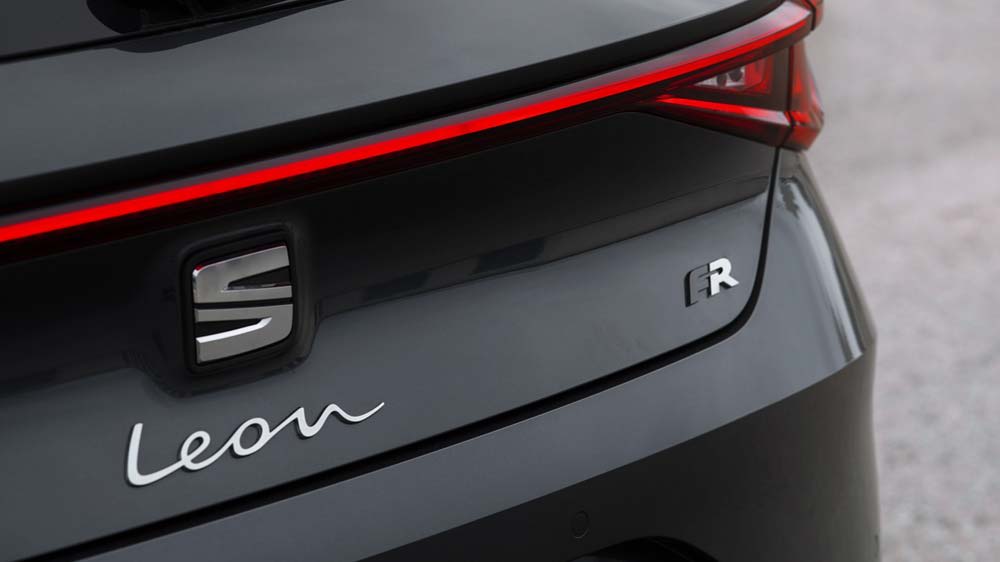
Base SE cars get 16 inch alloys, the SE Dynamic has 17 inch rims, and the wheel size moves up to 18 inches on anything FR and above. And while we haven’t mentioned it yet, there’s an unfashionable diesel engine to be had as well - a 2.0 litre TDI with 115 PS, and which will return up to 67 miles to the gallon.
Who Rivals The SEAT Leon?
You don’t have to look hard to find a mid-sized hatchback - but you will struggle to find one that’s better than the Leon. As we’ve pointed out here, the Leon gives the VW Golf a hugely impressive run for its money, both in terms of style and practicality. The Leons with the sports suspension also offer sharper handling than any of the non-performance Golfs, too. And with a long list of driver assistance and safety systems, as well as a fully-integrated infotainment system with Apple CarPlay and Android Auto, owners are well catered for. The Leon is more of a looker than the Ford Focus and scores brownie points for being less ubiquitous, too.
If you want a more refined interior with more bling, the BMW 1 Series should see you right, while the more expensive Audi A3 might also fall within your budget, with prices for the A3 starting at around £192 per month. Meanwhile a rival you might not have considered is the Skoda Scala, a car that went on sale back in May 2019.
The Scala has a certain rugged charm in its exterior styling and while it’s slightly more expensive to lease, at around £169 per month, it’s roomier and more practical than the Leon and has a larger 467 litre boot.
Verdict & Next Steps
For years the Leon has played second fiddle to the Golf. You can imagine how many Leon owners might have justified their purchase to their mates, telling them, ‘Yeah, ignore the badge, it’s actually a VW Golf underneath’.
With the 2020 incarnation of the Leon, however, SEAT have laid down a marker, and shown just how seriously they’ve been taking this game of industry catch-up. The latest Leon is a properly attractive car. Where it was once bulbous and fluffy, it’s now sharp, angular and edgy, while we particularly like the purposeful rear end.
The new mild hybrid and plug-in hybrid tech has seriously upped the ante, too, as SEAT lean heavily on existing VW Group tech but also somehow manage to make it distinctively theirs. And because SEAT can’t rely on the kudos of the name to draw you in, they instead have to tempt you away from VW by simply offering more in the way of equipment that comes as standard. No, it’s still not a car that’s going to win you a huge amount of bragging rights down the golf club, but it’s extremely accomplished and a whole lot of fun to live with.
Where to next?
View latest SEAT Leon hatchback car leasing deals - from just £158.99 per month inc VAT**
Looking for a great car lease deal? Check out our incredible range of car lease deals
New runaround hatchback? Read our latest Car Reviews and find the right model for you
Want to know more about leasing? Take a look at our comprehensive Leasing Guides
Interested in everything motoring? Why not catch up on all the latest Car Leasing News.
*Score based on Select’s unique meta score analysis, taking into account the UK’s top five leading independent car website reviews of the SEAT Leon Hatchback
**Correct as of 26/11/2020. Based on 9 months initial payment, 5,000 miles over a 36 month lease. Initial payment equivalent to 9 monthly payments or £1,430.89 Ts and Cs apply. Credit is subject to status.
.jpg)
.jpg)
.jpg)
.jpg)








